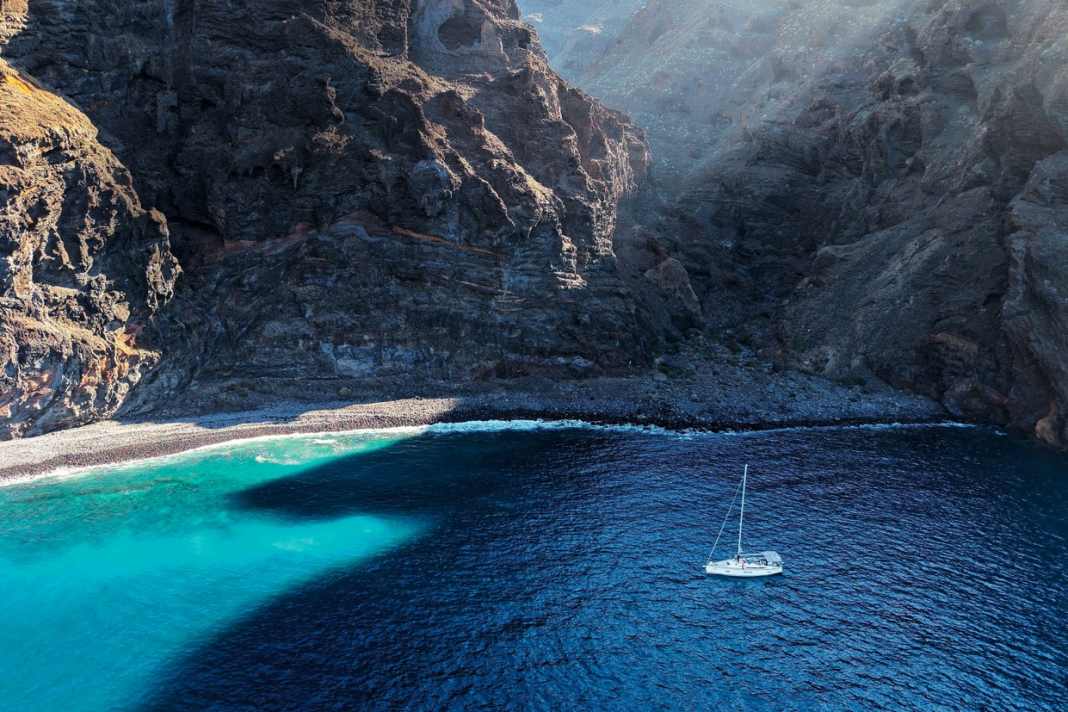





Part 2 of the report with La Gomera and La Palma read here.
It's mid-January, spring is still nowhere in sight and it's been a while since we sailed off. In other words, the first signs of withdrawal are spreading. What to do? The opportunities to go sailing in Europe right now are very limited, if not non-existent. With one exception: the Canary Islands. This popular outpost for winter refugees of all kinds.
Not an easy territory...
Not an easy area, of course. Certainly not for harmonious family outings or beginners. You shouldn't be fooled by the average amount of sunshine and temperatures suitable for swimming. The islands are located in the Atlantic and in the north-east trade wind, which is amplified by up to three wind forces due to the topography of the islands and the passages between them, as if in a wind tunnel. In the so-called wind acceleration zones, which require foresighted sailing.
Because otherwise - spoiler alert - you'll find yourself as unrefined as you were when you left the cosy coffee cruise and found yourself in a strong wind (even before you can finish your drink). You have to know that. And like it. And you shouldn't be afraid of Atlantic swell, i.e. metre-high waves. Those who don't mind all this will be rewarded with the finest ocean sailing, always with the next island in sight. Even if it is a long day at sea away.
Start in San Miguel, Tenerife
The port of departure for our cruise to the western Canary Islands is San Miguel on Tenerife, on the lee side of the mighty Teide volcano. Our ship is a somewhat aged Sun Odyssey 469 and the teak deck looks as if it has been sandblasted. It's as if the Calima, an easterly wind in the Canary Islands that brings a lot of Saharan dust, has done a great job.
The Canary Islands are harder on the boats than the Mediterranean, for example. During the briefing, we learn that the sand is hard on the furling systems. In other words: take it easy when setting sail. And with the main, make sure that there are no creases when furling.
Sure, you think, after all, this isn't the first time you've done all this. But the advice is justified: We leave the marina in aft winds. Shock, let up! The mainsail creaks so much when we pull it out that we check ten times to make sure the reefing line is really running free. And the foresail is anything but a sure-fire winner. Despite the aft breeze.
Not good, you think anxiously. What's it going to be like when hauling in with a lot of wind, when a crew member has to go to the foredeck to pull on the roller and literally choke on the last few metres?
Lunar landscape with lighthouse
Anyway, we're done for now. The ship picks up speed in a gusty backstay breeze. The sails are more or less upright. To starboard, the barren south of Tenerife, a lunar landscape with a lighthouse. Craters and lava as far as Cape Faro de la Rasca. Somewhat lulled by a half wind, then Los Cristianos to starboard. Lots of barely flattering concrete there. The blossoms of too much tourism, which is now also causing resentment among the locals on the Canary Islands. How good that as a sailor you don't feel quite so guilty!
For the first night, we look for a natural bay further north on the west coast. Without a concrete panorama and artificial light. Not least to honour the full moon at night and watch a few fire-dancing hippies on the beach. The last of their kind, whose distant drumming is repeatedly overrun by the beat of the surf. Unfortunately, the same applies to our sleep. It's the first of several rocky nights.
In the shadow of the giants
The day gets off to the best possible start with a jump from the bathing platform. Then muesli in the cockpit - to fortify us for setting sail, jokes a crew member. If there's enough time to sail in the lee of the Teide. Anchor up and set course for Los Gigantes along Tenerife's west coast. We are less interested in the town of the same name than in the cliffs that follow, which offer a spectacular view from the water. The cliffs drop up to 450 metres vertically into the sea.
The bay, a stone amphitheatre, is particularly impressive. Although we are not that early, the bay is still partly in the shade. Unfortunately, it is too choppy for a longer stay. Even going ashore in a dinghy is not without its problems: if you want to go to the beach, do it without an outboard motor and preferably in swimming trunks.
Course for La Gomera
By now at the latest, everyone on board must realise that the Atlantic is not the Mediterranean. A topic that will accompany us practically throughout this trip. One crew member even has to take seasickness tablets at night.
Around midday we set course for Gomera. The crew goes to the lookout. Around 500 to 600 pilot whales live between Tenerife and Gomera. Dolphin sightings are possible at any time. And at the right time of year, you can also encounter blue, fin, sperm and humpback whales between the islands. Humpbacks, on the other hand, can be seen all year round.
Part 2 of the report with La Gomera and La Palma read here.

